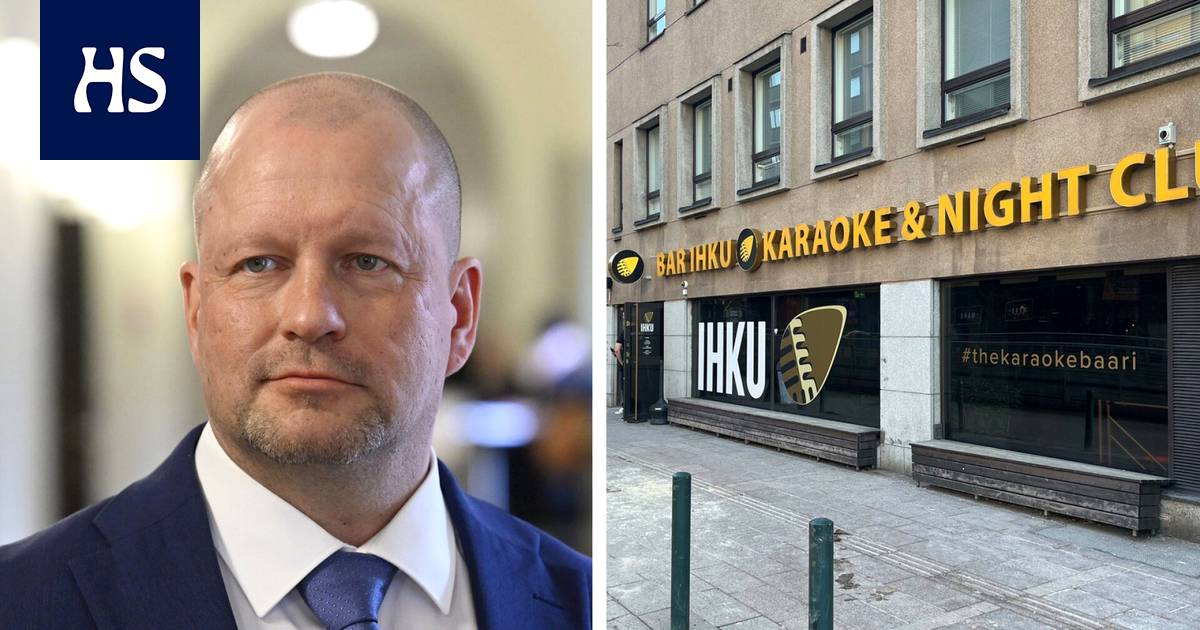After graduation as an architect Iines Karkulahti founded by his colleagues Meri Wiikinkoski and Charlotte Nyholmin with the Free Collective. The group is considering what changes slowing down climate change will require in terms of lifestyle, construction and the professional image of the architect.
Last year, the leisure team received the Erik and Carin Bryggman Award for Young Architects. The group currently also works as the presidency of the Finnish Architecture Association’s SAFA future group.
“Architecture is always future-oriented. Therefore, it seemed necessary to think together about what the future upheaval means, ”Karkulahti points out.
Normally, the careers of architects take off much later, as it can easily take up to ten years to complete a house from a competitive victory.
Many start working in the offices of experienced architects already during their studies, which has traditionally been an important part of learning the profession. This prolongs graduation, and if the career progresses from a competitive victory, by the time the first house is completed, there will already be 40-50-year-old “young Architects”.
“Our generation does not have time to wait 20 years for things to start going smoothly,” Karkulahti points out and admits that he has already had the eternal problem of architects, ie the difficulty of separating leisure and work.
Free-collective the ideas have already gained wider interest, and the group has been able to present their views on the transformation of the construction industry, for example, at the Museum of Architecture.
The built environment produces about 40 percent of greenhouse gas emissions and nearly a third of waste.
“Architecture has no choice but to be ecological. And on the other hand: architects are quite central to changing direction, ”Karkulahti assures.
“The climate debate is a vicious tangle where everything is connected to everything. The construction sector accounts for a huge share of carbon emissions. But on the other hand, sitting on top of great potential. If the construction industry manages to cut its emissions, the effects will be significant, ”Iines Karkulahti estimates.
“I would like the current climate movement not to be interpreted as just a whining for teens, but to be believed by scientists who warn unanimously: change is bound to happen. The current climate movement is due to the younger generation’s concrete concern for their own or their children’s future. ”
So what should be done right away?
“For a long time, resource scarcity defined the boundaries for the development of good and sustainable architecture. Now we have to use our creativity to redefine ourselves what would be the best architecture of the time, ”says Karkulahti.
“We should stop thinking of the changes required by the climate crisis as giving up familiar materials or restricting creativity.”
One the place of redefinition is the attitude towards the existing building stock. If a building is demolished, usable material is wasted, and building a new one causes an emission spike.
At the moment, the threshold for unloading is too low in Karkulahti’s opinion.
In Finland, there is a deep-rooted worship of novelty and, on the other hand, low tolerance for the old and the worn. According to Karkulahti, this attitude should change, as it leads to a consumption spiral.
“The current aesthetics that values novelty as an absolute value easily leads to dismantling. It has made a consumer society unrepairable and non-recyclable. All our mechanisms serve to make something new, instead of considering what could be done with the existing one, ”Karkulahti criticizes.
According to him, the aesthetics of novelty involves the idea of flawlessness and freedom of maintenance. For example, the requirement of cleanliness and cleanliness of the environment leads to grasslands that reduce biodiversity instead of meadows or wastelands.
“However, the natural processes are messy. There must be room for organisms, mosses, fungi – this too requires a change in thinking. ”
“In the work of the leisure team, we want to drive a systemic change in how the entire operating environment of construction becomes such that there is no longer sustainable construction, there is only construction,” Karkulahti defines.
Construction industry however, its emissions are not just about architecture. Is the young engineering community and students ready to make proposals and innovations on climate change mitigation?
According to Karkulahti ‘s assessment, there is. He cites the example of a recent competition with architecture students Heljä Nieminen and Havu Järvelä co-invented a master’s degree in civil engineering Saara Kemppainen with the pioneering idea of recycling concrete elements into loft homes.
During the design work, both architects and engineers have the opportunity to make concrete proposals that open up new avenues, and the client often expects them.
Karkulahti is optimistic that there is a readiness for change. Terms such as “greenwashing” and “flight shame” already indicate a gradual change in thinking. He also considers that both the international Pritzker Prize and the domestic Finlandia Prize have been given to renovation projects in recent years instead of new buildings.
Karkulahti Despite his young age, he is the responsible architect for Harris-Kjisik Architects’ large projects in Eastern Helsinki and Hakaniemenranta.
In the competition proposal for the center of Eastern Helsinki, the working group devised a mass art park based on a regional material cycle, in which a technical solution aimed at carbon neutrality becomes earth art and an identity factor for the region.
Karkulahti is a third-generation architect, for whom, however, sub-selection was not a matter of course. He first went to university to study mathematics, but eventually ended up at Aalto University, where he now also teaches urban planning.
Iines Karkulahti
-
Born in 1991 in Helsinki as the younger daughter of an architect and fashion designer.
-
Attended Helsinki High School of Natural Sciences.
-
Graduated as an architect from Aalto University in 2018. Studied urban planning at the University of Aarhus in 2015–16.
-
Works at the Harris-Kjisik Architects as a project architect.
-
Spend his anniversary with friends and family.
-
Turns 30 on Monday, October 18th.
.







